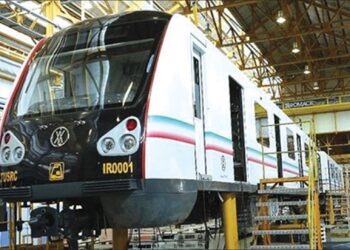March 20, 2016
Iran says the much-delayed inauguration of gas sales to Iraq will begin in less than a month—although it also said it just discovered that 20 miles of the pipeline inside Iraq have not been laid!
No one explained how the gap went unnoticed for years or how so much pipe could be laid in a month.
It sounded like yet another pipe dream.
Many times over the last three years, Iran has said the gas flow would begin a few months hence. Each deadline arrived only to be met with an announcement of another delay and a new deadline.
Last June, however, Iran’s gas company didn’t even bother to name a new date when the gas flow would begin. Everything was put on hold.
Then last week, Deputy Oil Minister Hossain Zamani-nia said Iran would be ready to start pumping within a month. “We hope the Iraqi side is ready to receive Iran’s gas, however, we have learned that 20 kilometers of the pipeline to send Iran’s gas to Iraq’s Diyala governorate is yet to be laid.” But Iranian officials said in September 2014 that the pipeline had been completed. Furthermore, the pipeline was being laid by an Iranian company, so there shouldn’t have been any surprise to Iran if there was a gap.
Iran and Iraq signed an agreement for gas supply and pipeline construction in June 2011 with an announcement saying delivery would begin late in 2012. Since then, new dates for the start have come and gone with the seasons. The Islamic State didn’t burst into Iraq until June 2014, so it was certainly not a factor in the first year-and-a-half of delays.
“The lack of security and the presence of Daesh [Islamic State] is behind the delay of gas exports to Iraq,” Ali-Reza Kameli, head of the National Iranian Gas Exports Company, was quoted as saying last year by Shana, the news agency of Iran’s Oil Ministry.
When asked when exports might begin, he replied: “That depends on the security situation in Iraq.”
Furthermore, the gas is to be delivered to three electricity-generating plants south of Baghdad, which is not where Daesh operates.
Blackouts are still common in Iraq and are a major liability for the elected government, which is trying desperately to boost the electrical supply.
In June 2011, the spokesman for Iraq’s Electricity Ministry, Mussab al-Mudaris, said the plan called for a five-year contract under which Iran would pipe 25 million cubic meters per day to two power plants—later raised to three—being built south of Baghdad.
One of the power plants was being built by Iran.
Mudaris said the gas supply would start by the end of 2012 when the new pipeline and the plants would all be completed.
However, Iran and Iraq have many agreements on economic cooperation that have never materialized. For example, the two countries signed agreements 12- years ago to bring Iraqi crude to Iran’s Abadan refinery and to send refined products back to Iraq. Nothing has happened, however, although the pipelines required are just short spurs of a few miles each. An agreement on a railroad link is among others gathering dust.
The one area where cooperation has developed has been in electricity, where Iran’s Energy Ministry and Iraq’s Electricity Ministry seemed to have developed a functioning relationship.
In December 2013, long after the pipeline was supposed to have been finished, unknown gunmen shot and killed 15 Iranian workers on the pipe-laying project. The pipeline goes through Diyala province, which has long been a center of Sunni-Shia frictions. Many Iranian pilgrims passing through Diyala have come under attack. But the Islamic State doesn’t operate combat units there, though it could certainly send in bombers if it chose to.
Under the Iran-Iraq agreement, 25 million cubic meters of gas are to be delivered daily to three electric power plants—Sadr, Baghdad and al-Mansouryah—through a spur pipeline.
The 270-kilometer pipeline stretches from the village of Charmaleh, located in Iran’s Western province of Kermanshahan, into the town of Naft Shahr on the border with Iraq and then into Iraq and onto the outskirts of Baghdad
The gas, which is expected to earn Iran $3.7 billion a year in revenues, will be fed from the South Pars gasfield in the Persian Gulf.
The deal is important economically for Iran as Iran only exports gas now in any quantity to a solitary country—Turkey. Iran has been pushing natural gas exports for decades with stunning lack of success.
Iran exported natural gas by pipeline to the Soviet Union under the Shah. The Soviets bought Iranian gas to supply the Caucuses region. After the revolution, Iran unilaterally boosted the price overnight—and the Soviets stopped buying overnight. Iran did not export any more for another two decades when Turkey began buying Iranian gas.

















